This recipe for Edible Flower Shortbread Cookies is show-stopping and simple! Made with just 5 ingredients, these vegan treats are festive and fun for any spring or summer occasion.
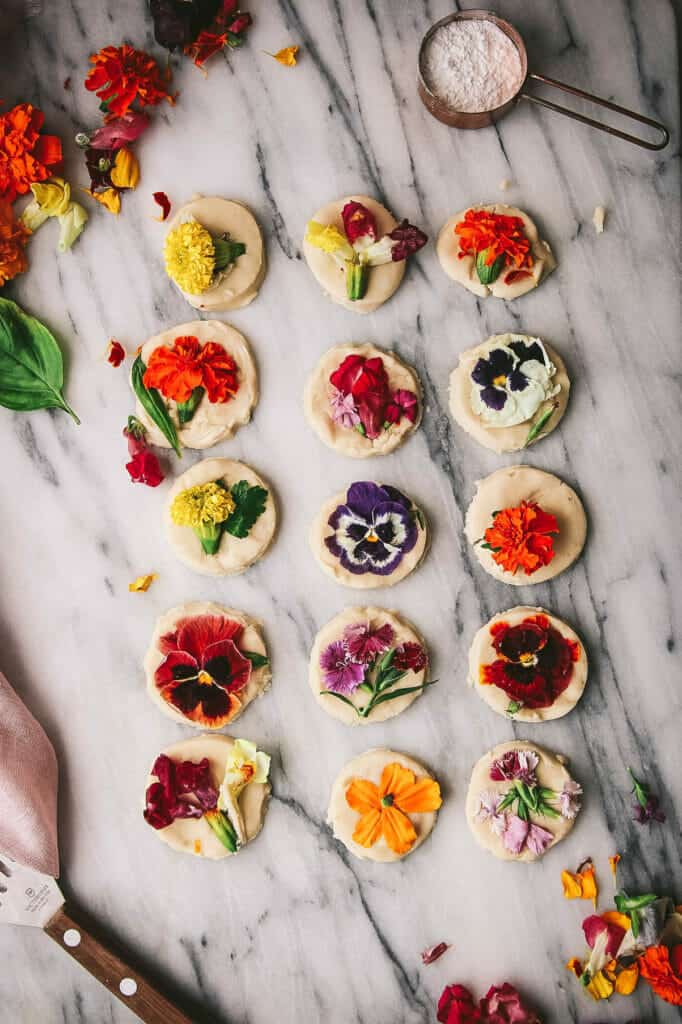
Celebrate spring and summer with these festive cookies! I specifically had Mother's Day in mind when creating these, but they can work for a variety of occasions.
Details for these Vegan Shortbread Cookies
Shortbread is a classic cookie type known for its high proportion of butter to other ingredients. This also can mean it's a devil to work with if you live in a warm climate. Melting butter is not easy to roll out! Vegan butter in particular can melt very quickly, so I've outlined in the recipe card so ways to get around this.
Edible flowers are really fun way to add some color and moderate flavor to the tops of these treats.
Where to Buy Edible Flowers
The best option for this recipe is to use flowers you are able to grow yourself. This is most affordable and the easiest way to know that you're using a totally organic product that has not been sprayed with pesticides. However, this is sadly not a reality for many of us. Therefore, here are my favorite options for acquiring edible flowers for baking:
- Local farms or farm markets in your area
- Whole Foods
- Gourmet Sweet Botanicals
- Amazon
- Cherry Valley Organics
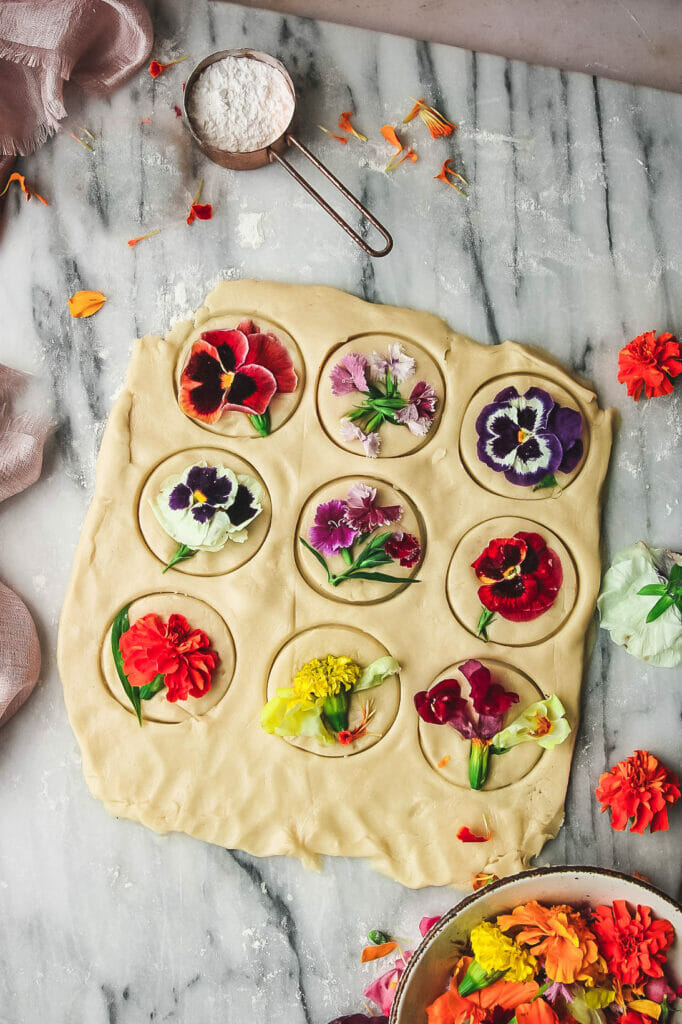
Flower Shortbread Recipe FAQ
Why is it called shortbread anyway?
"Short" references an older word to describe the crumbly texture of these cookies. Due to a high fat content, gluten formation is inhibited when mixing. Therefore, there are no "long" gluten strands. Shortbread also does not contain a leavening agent (such as baking soda or baking powder). Therefore, it does not rise.
What are the best edible flowers for making cookies?
Organic pansies are best due to their wide variety of bright colors, flat and small surface area, and mild flavor. Look in the produce section of your local grocery store for an organic option (it's normally sold near the herb clamshells). A better option, if it's possible for you, is to grow your own!
What are some other edible flowers for baking?
Violets, daisies, daylily, chamomile, calendula, and rose petals are all excellent options for at-home baking. They are fairly flat (will not stand off too much on the cookie itself) and have a relatively mild flavor once baked. While marigolds and nasturtium are edible, I do no recommend them for cookies as they have a more sharp flavor.
What ingredients are needed for vegan shortbread?
You only need all purpose flour, powdered sugar, vegan butter, and salt to make plant-based shortbread cookies. Vanilla or almond extract are optional.
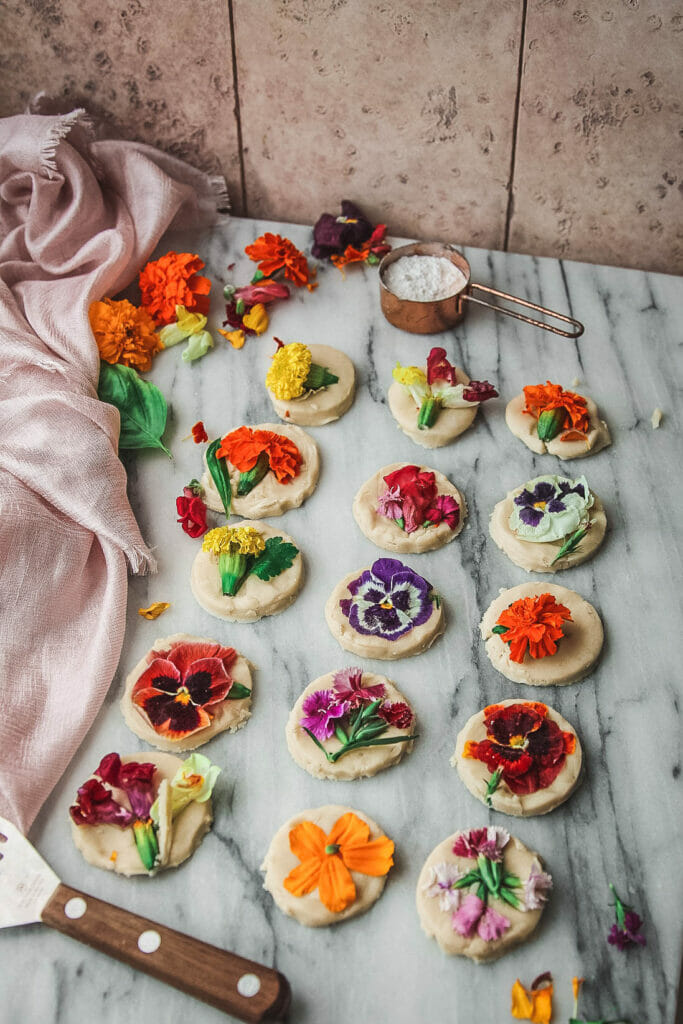
Other Colorful Cookie Recipes to Try Next
Soft Batch Lemon Crinkle Cookies
Soft Batch Rainbow Sprinkle Cookies
Print
Flower Shortbread Cookies
- Total Time: 30 minutes
- Yield: 20 cookies 1x
- Diet: Vegan
Description
This recipe for Edible Flower Shortbread Cookies is show-stopping and simple! Made with just 5 ingredients, these vegan treats are festive and fun for any spring or summer occasion.
Ingredients
- ¾ cup room temperature butter, like Miyokos
- 1 ¼ cup all purpose flour
- ⅓ cup + 2 TBS powdered sugar
- ¼ tsp salt
- ½ tsp vanilla or almond extract, optional
- 1 cup edible flowers, like pansies, for garnishing
Instructions
- Using a stand or hand mixer, beat butter for about one minute until it is smooth and creamy. Add in flour, sugar, salt, and extract if using. Beat until smooth and just combined, but not for too long (over-beating can make it tough). Ideally, your dough is crumbly but sticks together when pinched.
- If you're in a warm room, it's likely the dough is getting pretty soft. This can be hard to work with, so I recommend popping it in the fridge for 5-10 minutes, until it's easier to roll out.
- There are two ways to create your cookies. For the first way, lightly flour a surface and place your ball of cookie dough down. Dust with more flour and roll out into a large rectangle with a thickness of about ½ inch (1.3 cm). Using a circular cookie cutter, punch out cookie shapes, re-rolling the scraps as necessary until you've used them all. The amount of cookies you make will depend on the size of the cutter, but I recommend something 1-2 inches in diameter (3-5 cm). For the second way, roll your cookie dough into a circular log with a diameter of 1-2 inches (3-5 cm). Place this log in the freezer for about 10 minutes, until it's nice and cool. Remove from the freezer and slice into ½ inch (1.3 cm)-wide coins.
- Once you have all the circles in place, add them to a lined cookie sheet and preheat your oven to 350 degrees F.
- Carefully press each edible flower into each cookie in whatever design you like. If your flow is pretty big, I recommend picking off a few petals so it lies flat on the cookie surface.
- Bake shortbread for 12-14 minutes, until lightly golden. They will bake a bit more as they cool on the surface of the cookie sheet. After 5 minutes, remove from sheet to fully cool on a wire rack. Store in a sealed container for up to four days (keep in mind that the cookies will soften a bit as they sit).
- Prep Time: 18 minutes
- Cook Time: 12 minutes
- Category: Dessert
- Method: Baking
- Cuisine: American
Nutrition
- Serving Size: 1 cookie
- Calories: 93 calories
- Sugar: 2.7 grams
- Sodium: 68.7 milligrams
- Fat: 6.1 grams
- Saturated Fat: 4.8 grams
- Unsaturated Fat: 1.3 grams
- Trans Fat: 0 grams
- Carbohydrates: 8.7 grams
- Fiber: 0.2 grams
- Protein: 0.8 grams
- Cholesterol: 0 milligrams

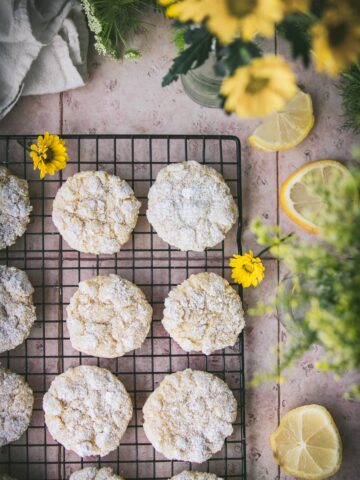
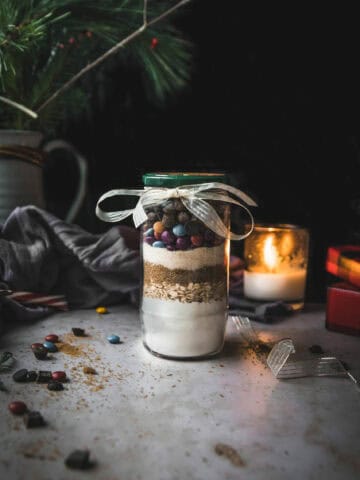
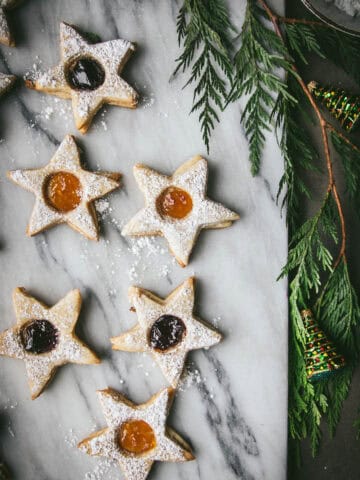
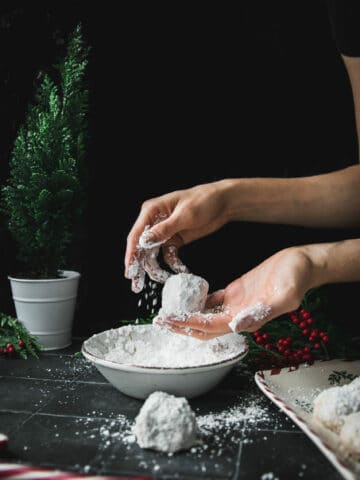
Bethanne Nimitz
Beautiful and tasty. These are amazing for Mothers Day!
Emily
Thank you for making them!